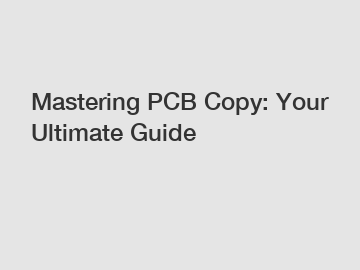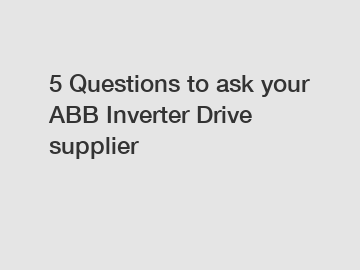A Magnificent Journey into the World of Lithium Battery Cells
Feb. 07, 2024
Welcome to the electrifying world of lithium battery cell! In this comprehensive guide, we'll embark on a journey to explore the intricate details, applications, advancements, and future prospects of lithium battery cells. From their inception to their modern-day prominence, these powerhouses of energy storage have revolutionized numerous industries, ranging from consumer electronics to electric vehicles and renewable energy storage solutions. Let's delve deeper into the realm of lithium battery cells and unravel the mysteries behind their widespread adoption and technological evolution.

Lithium battery cells the cornerstone of modern energy storage systems, are rechargeable batteries that utilize lithium ions as the primary component of their electrochemistry. These cells encompass various chemistries, including lithium-ion (Li-ion), lithium-polymer (LiPo), and lithium iron phosphate (LiFePO4), each offering distinct advantages tailored to specific applications.
Evolution of Lithium Battery Technology
The evolution of lithium battery technology has been nothing short of remarkable. From the early nickel-cadmium (NiCd) and nickel-metal hydride (NiMH) batteries to the breakthrough development of lithium-ion batteries in the 1980s by John B. Goodenough and his team, the journey towards safer, more efficient, and high-energy-density battery cells has been characterized by relentless innovation and research.
Anatomy of a Lithium Battery Cell
At its core, a lithium battery cell comprises several key components, including the cathode, anode, electrolyte, and separator. The cathode typically consists of lithium cobalt oxide (LiCoO2), lithium iron phosphate (LiFePO4), or lithium manganese oxide (LiMn2O4), while the anode predominantly features graphite or lithium titanate (Li4Ti5O12). These components, along with the electrolyte, facilitate the movement of lithium ions during charge and discharge cycles, enabling the storage and release of electrical energy.
Applications of Lithium Battery Cells
The versatility and high energy density of lithium battery cells have propelled their widespread adoption across various industries, fueling innovation and driving technological advancements.
Consumer Electronics
In the realm of consumer electronics, lithium battery cells have become ubiquitous, powering smartphones, laptops, tablets, and wearable devices. Their lightweight design, high energy density, and rechargeable nature make them ideal for portable electronic gadgets, ensuring prolonged usage and enhanced convenience for users.
Additional reading:Do Balcony Power Plants work in all climates?
Forklift Battery Maintenance: Do's and Don'ts
Electric Vehicles (EVs)
What kind of batteries are in exit signs?
Exploring AC EV Chargers: A Comprehensive Guide
Exploring the Benefits of a 30kW Smart Home Wallbox EV Charger
How much do you know about charging piles?
Exploring the Advantages of 40kW DC Chargers for Electric Vehicles
The automotive industry has witnessed a monumental shift towards electric mobility, with lithium battery cells playing a pivotal role in powering electric vehicles (EVs). These advanced battery systems offer increased range, rapid charging capabilities, and superior performance compared to traditional internal combustion engines, driving the transition towards sustainable transportation solutions.
Renewable Energy Storage
Lithium battery cells serve as the cornerstone of renewable energy storage systems, facilitating the integration of solar and wind power into the electrical grid. Through the deployment of large-scale lithium-ion battery arrays, excess energy generated from renewable sources can be stored efficiently and utilized during periods of high demand or when renewable generation is low, thereby enhancing grid stability and promoting renewable energy integration.
Advancements in Lithium Battery Technology
The relentless pursuit of innovation has led to significant advancements in lithium battery technology, ushering in an era of safer, more durable, and higher-performing battery cells.
Solid-State Batteries
Solid-state batteries represent the next frontier in lithium battery technology, offering enhanced safety, increased energy density, and extended cycle life compared to conventional liquid electrolyte-based batteries. By replacing the flammable liquid electrolyte with a solid-state electrolyte, solid-state batteries mitigate the risk of thermal runaway and improve overall battery performance, paving the way for next-generation energy storage solutions.
Silicon Anode Batteries
Silicon anode batteries hold immense promise for revolutionizing lithium battery technology, thanks to their high theoretical capacity and compatibility with existing battery manufacturing processes. By incorporating silicon-based anodes, which can store significantly more lithium ions than traditional graphite anodes, these batteries promise to deliver higher energy densities and extended driving ranges for electric vehicles, thereby addressing key challenges associated with battery performance and range anxiety.
Conclusion
In conclusion,Sinopoly lithium battery cells represent a transformative technology that has reshaped the landscape of energy storage and consumption. From powering our everyday gadgets to driving the transition towards sustainable transportation and renewable energy solutions, these remarkable power sources continue to drive innovation and propel us towards a cleaner, greener future.
Additional reading:How to Save Money When Buying 24v tool battery
Key Questions to Ask When Ordering HELL Gravure Diamond Tool
How to Save Money When Buying 3 gang power switch
motors off system input - ABB Robot Forum
How to Choose the Best ABB Inverter Distributor?
How Will M3bp Transform Low Voltage Motors?
How to Select the Right ABB Inverters Distributor?
95
0
0
Related Articles
-
69
0
0
-
69
0
0
-
73
0
0
-
68
0
0
-
76
0
0
-
72
0
0
-
72
0
0
-
70
0
0










Comments
All Comments (0)